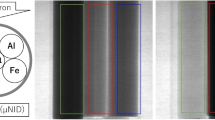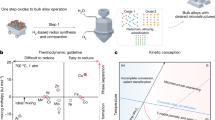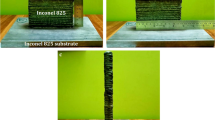Abstract
DR. K. H. JOLLIFFE and I1 have investigated the creep of metals under simple shear by the use of a disk of the metal in question, in which is cut a concentric circular annulus, the metal external to the annulus being securely gripped, while that internal to the annulus is subjected to a constant torque. We have shown that the behaviour of the metal in these circumstances is in many ways simpler and more informative than that exhibited by wires or rods under tension.
This is a preview of subscription content, access via your institution
Access options
Subscribe to this journal
Receive 51 print issues and online access
$199.00 per year
only $3.90 per issue
Buy this article
- Purchase on SpringerLink
- Instant access to full article PDF
Prices may be subject to local taxes which are calculated during checkout
Similar content being viewed by others
References
Andrade, E. N. da C., and Jolliffe, K. H., Proc. Roy. Soc., A, 213, 3 (1952); 254, 291 (1960).
Andrade, E. N. da C., Proc. Roy. Soc., A, 85, 448 (1911).
Inglis, C. E., Proc. Roy. Soc., A, 103, 598 (1923).
Author information
Authors and Affiliations
Rights and permissions
About this article
Cite this article
ANDRADE, E. A Simple Method of investigating the Creep of Metals under Simple Shear. Nature 187, 494 (1960). https://doi.org/10.1038/187494a0
Issue date:
DOI: https://doi.org/10.1038/187494a0
This article is cited by
-
Orientation-dependence of Fatigue-accelerated Creep in Aluminium Single Crystals
Nature (1965)
-
Flow of Cadmium under Very Small Stresses
Nature (1962)
-
Creep of Metals under Simple Shear
Nature (1961)



